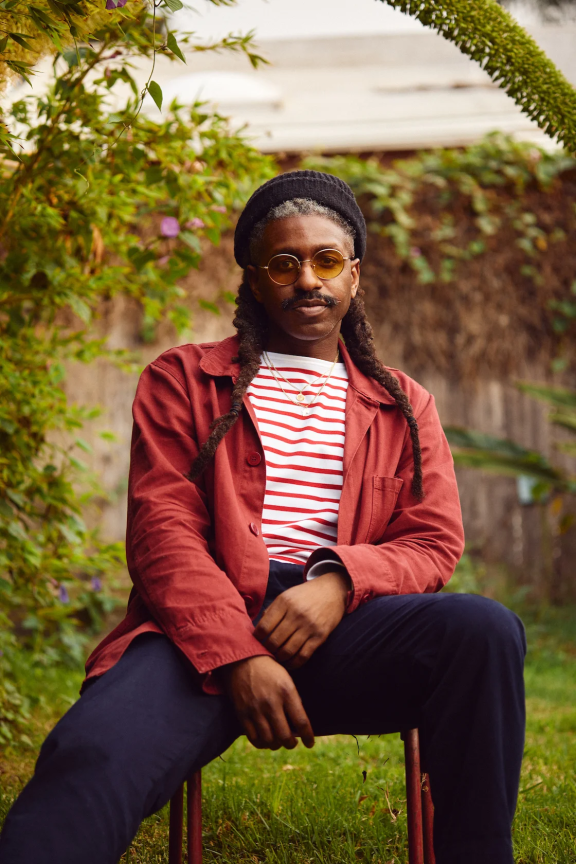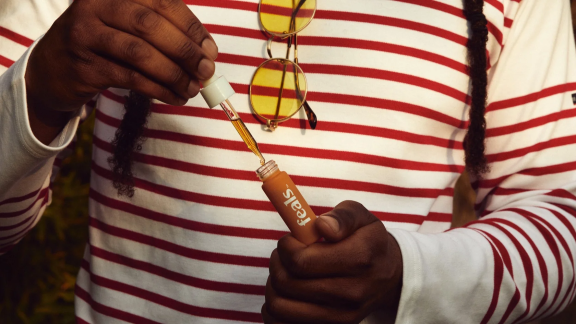It might be easier to list off who Brad Ogbonna hasn’t shot rather than who he has, but for the sake of expediency, the New York-based photographer has been behind the lens of iconic shots of Zendaya, Lizzo, Billie Eilish, Michael B. Jordan, Mark Ronson, Rob Gronkowski, Lil Yacthy, Eddie Murphy, and Selena Gomez, to name just a few. He’s also a longtime collaborator with artist Kehinde Wiley, and he partook in the process of Wiley’s presidential portrait of Barack Obama.
As you might be able to glean from that highlight reel alone, Brad is a busy man. But in the process of carving out an exceptional career, he has increasingly recognized the importance of “[seeing himself] outside of [his] work,” as he puts it.
We caught up with Brad while he was in Los Angeles recently to get a glimpse of how he manages work-life balance as a freelance artist, what’s given him a sense of fulfillment outside of having a killer career, and how pandemic-related conditions of the last couple of years have impacted a field of work that is inherently intimate.

Yeah, it can be tough, because every day is a little different. On days I’m shooting, I’m up early getting equipment together, looking over call sheets, making sure everything’s good on that front. If I have time, I’ll make breakfast—I’m a big eggs guy. A little soft scramble with greens on the side. Ideally I can turn the radio on, listen to some BBC. That’s my time to reflect. And my mom lives in Nigeria, so when I’m eating breakfast, that’s midday for her. That’s when I’ll try and catch up with her.
It depends. I’d say half of the people I’ve worked with have been so excited just to be close to someone. They’re just happy and enthralled to talk to another human being. With others, it’s felt very shut off, so it maybe takes that extra nudge to get them to come out of their shell a little. People are a little paranoid; no one really knows what’s going on. So it takes a little bit more time to build that rapport to make people feel comfortable again.
For me, I’m trying to take time to just speak to people—to see where they’re at and to ask how they’ve been.
It’s mostly based on travel, and they’re projects I’ve been doing around the world. I like to just meet people and see where they take me. There’s no set of objectives. I want to see where they take me. That, to me, is what keeps things interesting. It’s always a unique experience.
I put on music. It’s always in the background. Then I might have some wine. Light some candles. Palo santo. Sage. I like to watch different movies, or I’ll read when I can—mostly fiction these days. I collect a lot of photo books, so I’ll flip through those and bookmark things I find interesting. Cooking is always a nice time to detach from work. I also spend a lot of time in my yard having fires.

I’m still figuring it out myself. Starting out, I didn’t really have a distinction—work dominated most of my life. It needed to. But now, I try and set aside time just to detach from work. I think it’s really important to see yourself outside of work.
At this point, I don’t feel like work defines me as much as it used to. I love it. But I have more interests outside of that—cooking, being outside, road trips, being out in the woods. It’s so vital to the artistic practice to reflect on what you’ve created and what you hope to create. So my advice would be to find that time to detach and reflect. It’s definitely a privilege to be able to do that—a lot of people are out there hustling. But you have to be mindful of your mental health. And most importantly, make stuff that feels gratifying.
